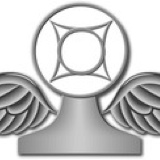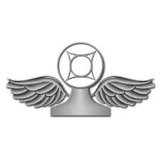Information
-
TRAINEE NAME
-
DATE
-
PROFFESIONAL STANDARDS
-
DISPLAY
-
Manages the aircraft to achieve the highest levels of safety, efficiency and customer experience
-
Maintains a high standard of discipline, conduct and appearance
-
Demonstrates responsibility for the duty of care and welfare of the crew and customers
-
Considers best commercial interests of British Airways when making decisions
-
Communicates and interacts with customers as appropriate for best commercial advantage
-
Maintains high operational standards
-
Demonstrates a motivation for continuous professional development
-
Demonstrated all of the performance indicators
LEADERSHIP & TEAMWORK
-
DISPLAY
-
Takes initiative, inspires and motivates
-
Empowers and values other team members
-
Creates atmosphere for open communication
-
Considers suggestions of others
-
Does not interfere unnecessarily
-
Ensures crew involvement and task completion
-
Supports, coaches, delegates and directs as required
-
Advocates own position and intervenes when appropriate
-
Carries out instructions when directed
-
Demonstrates empathy, respect and tolerance for others
-
Encourages, gives and receives feedback constructively
-
Addresses and resolves conflict in a constructive manner
-
Demonstrated all of the performance indicators
COMMUNICATIONS
-
DISPLAY
-
Conveys information clearly, accurately and in a timely manner
-
Briefings are open, interactive, concise
-
Uses body language that is consistent with verbal messages
-
Checks for understanding of important information
-
Listens actively and resolves uncertainty and ambiguity
-
Uses open, closed and limiting questions as appropriate
-
Adheres to standard RT phraseology and procedures
-
Demonstrated all of the performance indicators
SITUATION AWARENESS
-
DISPLAY
-
Continually maintains awareness of aircraft state, position, flight path and general environment
-
Continually maintains awareness of the people involved in or affected by the operation
-
Uses periods of low workload to conduct briefings and think ahead
-
Identifies and manages threats and errors
-
Regularly reviews, shares and updates mental models using the elements of situation awareness (Plane, Path, People)
-
Considers not just ‘what’ to do but ‘how’ to do it
-
Sets gates and establishes bottom lines
-
Discusses ‘what if’ scenarios and contingency strategies
-
Recognises and responds effectively to indications of reduced situation awareness
-
Demonstrated all of the performance indicators
WORKLOAD MANAGEMENT
-
DISPLAY
-
Is calm, methodical and not impulsive
-
Plans and prioritises tasks effectively (including Fly, Navigate, Communicate)
-
Anticipates and plans for potential high workload situations
-
Assesses and manages time to ensure task completion
-
Distributes tasks appropriately utilising all resources
-
Manages interruptions and distractions effectively
-
Recognises signs of stress, fatigue and overload and responds by making time and reducing workload
-
Offers and accepts assistance and asks for help early
-
Demonstrated all of the performance indicators
PROBLEM SOLVING & DECISION MAKING
-
DISPLAY
-
Uses an appropriate decision making process
-
Allocates appropriate time for decision making process
-
Uses all resources to diagnose and understand the problem
-
Asks for options or suggests alternative options
-
Discusses the risks and consequences of alternative options
-
Communicates agreed option and assigns tasks
-
Reviews and validates original decision
-
Recognises change and adapts plans as required to ensure an optimum outcome
-
Demonstrated all of the performance indicators
KNOWLEDGE & APPLICATION OF PROCEDURES
-
DISPLAY
-
Demonstrates practical knowledge of aircraft limitations and systems
-
Demonstrates thorough knowledge of regulations, policies and procedures
-
Correctly sources required operational information
-
Correctly operates aircraft systems and equipment
-
Follows SOPs unless safety dictates otherwise
-
Applies relevant procedural knowledge
-
Disciplined management of aircraft procedures and checklists
-
Demonstrated all of the performance indicators
MANUAL FLIGHT CONTROL
-
DISPLAY
-
Controls the aircraft manually with accuracy and smoothness
-
Operates the aircraft within the normal flight envelope
-
Manages the flight path and energy to achieve optimum operational performance
-
Uses appropriate modes and makes correct target selections
-
Monitors flight guidance systems effectively
-
Detects deviations from the required aircraft state or flight path and takes appropriate action
-
Demonstrated all of the performance indicators
AUTOMATIC FLIGHT CONTROL
-
DISPLAY
-
Controls the aircraft using automation with accuracy and smoothness
-
Operates the aircraft within the normal flight envelope
-
Manages the flight path and energy to achieve optimum operational performance
-
Uses appropriate level of automation
-
Briefs and uses appropriate modes and makes correct MCP/FCU and MCDU selections
-
Monitors flight guidance systems effectively including engagement and automatic FMA transitions
-
Detects deviations from the required aircraft state or flight path and takes appropriate action
-
Demonstrated all of the performance indicators
OVERALL SCORE
-
The line check score is a balance of the nine competency scores, subject to the following constraints: The line check score is 5 if one or more of the competencies are graded as 5. The line check score can be no higher than 4 if one or more of the competencies are graded as 4.











